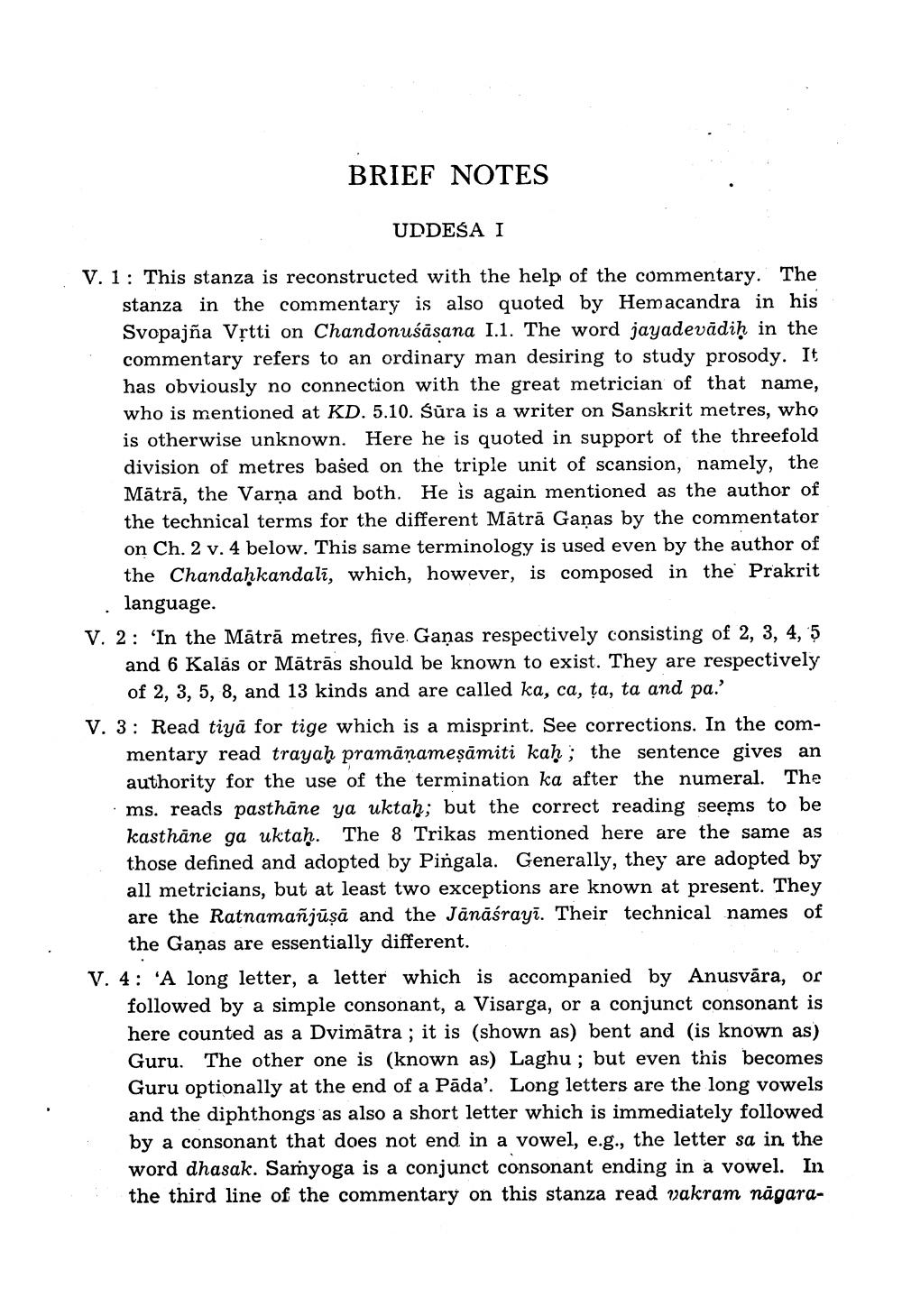________________
BRIEF NOTES
UDDESA I
V.1: This stanza is reconstructed with the help of the commentary. The
stanza in the commentary is also quoted by Hem acandra in his Svopajña Vștti on Chandonuśāsana I.1. The word jayadevādiḥ in the commentary refers to an ordinary man desiring to study prosody. It has obviously no connection with the great metrician of that name, who is mentioned at KD. 5.10. Śūra is a writer on Sanskrit metres, who is otherwise unknown. Here he is quoted in support of the threefold division of metres based on the triple unit of scansion, namely, the Mātrā, the Varna and both. He is again mentioned as the author of the technical terms for the different Mātrā Ganas by the commentator on Ch.2 v. 4 below. This same terminology is used even by the author of the Chandahkandali, which, however, is composed in the Prakrit
language. V. 2: 'In the Matrā metres, five Ganas respectively consisting of 2, 3, 4, 5
and 6 Kalās or Mātrās should be known to exist. They are respectively
of 2, 3, 5, 8, and 13 kinds and are called ka, ca, ţa, ta and pa.' V. 3: Read tiyā for tige which is a misprint. See corrections. In the com
mentary read trayaḥ pramāṇameşāmiti kaḥ, the sentence gives an
authority for the use of the termination ka after the numeral. The · ms. reads pasthāne ya uktah; but the correct reading seems to be kasthāne ga uktah. The 8 Trikas mentioned here are the same as those defined and adopted by Pingala. Generally, they are adopted by all metricians, but at least two exceptions are known at present. They are the Ratnamañjūsā and the Jānāśrayi. Their technical names of
the Gaņas are essentially different. V. 4: 'A long letter, a letter which is accompanied by Anusvāra, or
followed by a simple consonant, a Visarga, or a conjunct consonant is here counted as a Dvimātra ; it is (shown as) bent and is known as) Guru. The other one is (known as) Laghu ; but even this becomes Guru optionally at the end of a Pāda'. Long letters are the long vowels and the diphthongs as also a short letter which is immediately followed by a consonant that does not end in a vowel, e.g., the letter sa in the word dhasak. Samyoga is a conjunct consonant ending in a vowel. In the third line of the commentary on this stanza read vakram någara




